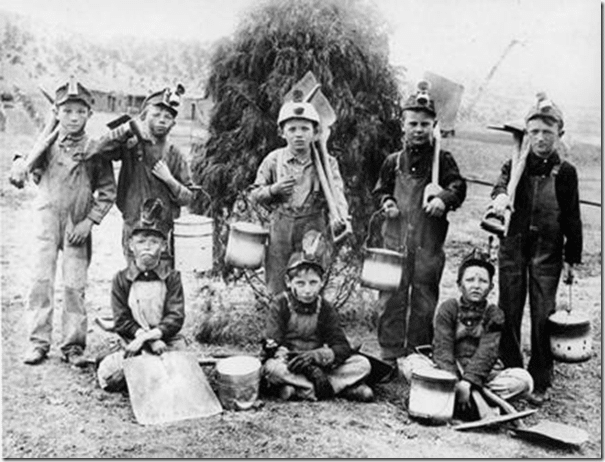Young Worker Safety
Photo: Colorado Historical Society
Working with young people brings unique safety challenges to the OHS professional, supervisors and managers. Workers 15-24 have a 75% greater chance of being killed on the job, often their accidents happen in the first 2 weeks of employment. Work in construction, using motor vehicles and moving machinery is particularly hazardous to young people.
They are still developing physically and mentally, lack experience and are unfamiliar with the demands of work. They usually will not speak up and question what they are asked to do. They are generally unsure of their OHS rights and responsibilities. Young workers can find it difficult to fully grasp risks so they may make impulsive decisions. For some young people giving them something physical and / or with their hands to do is a better option than activities that require a lot of thought or are otherwise theoretical.
Although the brain reaches its full adult weight by the age of 21, it continues to develop for several years. In fact, a study done by the National Institutes of Health found that the region of brain that inhibits risky behavior does not fully form until age 25. This is the final stage of brain development.
The sleep hormone melatonin is produced later at night in young people making it harder to wind down at night and results in a struggle to wake up in the morning.
Adolescent behaviour can be associated with risk taking and recklessness. Some young workers will want to impress and this can lead to risky behaviour. Young males are more prone to make aggressive responses to a range of situations. Many young people are unsure of themselves and will not reveal their inner selves in group situations, working one on one with them can be productive however .They will often not reveal their uncertainty about instructions they have been given. Some younger workers are more prone to fatigue than older workers. Alcohol and / or drugs can be a factor.
An important message is to advise them to ask their supervisor if they are unsure of any aspect of the work they are asked to do. If they think the work is hazardous refer to the supervisor and refuse to do it if there is no satisfactory conclusion. They need to know they should not get in trouble for not doing hazardous work.
Get them to write down instructions or use a documented safe working procedure.
Be very specific in your instructions to young people.
Induction training and general training needs special emphasis for young people, they will not understand common workplace terms and equipment, detailed checks for understanding are necessary.
Supervision of young people also requires special emphasis. One must allocate appropriate tasks in line with their experience.
Performance feedback and using positive adult role models is particularly important
Allocating a coach or mentor to work with them can be productive.
Source-Safework Victoria, Workcover N.S.W.
In my research to write the above I found it difficult to obtain good source material, I would appreciate it if others could advise relevant references.




Do you have any thoughts? Please share them below